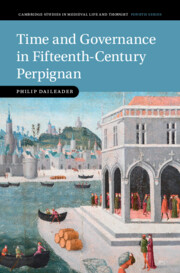Refine search
Actions for selected content:
151 results

The North Caucasian Kingdom of Alania, 850–1240
-
- Published online:
- 17 December 2025
- Print publication:
- 21 August 2025

Afro-Mexican Lives in the Long Nineteenth Century
- Slavery, Freedom, and the Writing of History
-
- Published online:
- 20 November 2025
- Print publication:
- 04 December 2025
4 - The Court of Wards
-
- Book:
- Institutional Change and Property Rights before the Industrial Revolution
- Published online:
- 23 October 2025
- Print publication:
- 06 November 2025, pp 78-133
-
- Chapter
- Export citation
5 - The Early Stuart Fiscal State
-
- Book:
- Institutional Change and Property Rights before the Industrial Revolution
- Published online:
- 23 October 2025
- Print publication:
- 06 November 2025, pp 134-149
-
- Chapter
- Export citation
War of movement: The political economy of conflict escalation in Colombia, 1990–8
-
- Journal:
- Review of International Studies , First View
- Published online by Cambridge University Press:
- 04 November 2025, pp. 1-20
-
- Article
-
- You have access
- Open access
- HTML
- Export citation
Chapter 2 - The Expanding World of Warring States
-
- Book:
- The Roman Empire and World History
- Published online:
- 31 October 2025
- Print publication:
- 30 October 2025, pp 28-55
-
- Chapter
- Export citation
4 - War and State Formation in Early Modern Europe*
- from Part II - Nationalism and the Transformation of the State
-
- Book:
- Nationalism and the Transformation of the State
- Published online:
- 27 November 2025
- Print publication:
- 23 October 2025, pp 79-107
-
- Chapter
-
- You have access
- Open access
- Export citation
Chapter 3 - The ‘Power of the Foreign’ and the Political Economy of the Central North Caucasus in the Tenth Century
-
- Book:
- The North Caucasian Kingdom of Alania, 850–1240
- Published online:
- 17 December 2025
- Print publication:
- 21 August 2025, pp 119-157
-
- Chapter
- Export citation
Conclusion: Beyond Failure
-
- Book:
- The North Caucasian Kingdom of Alania, 850–1240
- Published online:
- 17 December 2025
- Print publication:
- 21 August 2025, pp 275-279
-
- Chapter
- Export citation
Introduction: Framing Alania
-
- Book:
- The North Caucasian Kingdom of Alania, 850–1240
- Published online:
- 17 December 2025
- Print publication:
- 21 August 2025, pp 1-40
-
- Chapter
- Export citation
Introduction
-
- Book:
- Time and Governance in Fifteenth-Century Perpignan
- Published online:
- 26 July 2025
- Print publication:
- 14 August 2025, pp 1-10
-
- Chapter
- Export citation
Chapter 4 - Municipal Citizens, Royal Subjects, and Catalans
-
- Book:
- Time and Governance in Fifteenth-Century Perpignan
- Published online:
- 26 July 2025
- Print publication:
- 14 August 2025, pp 131-163
-
- Chapter
- Export citation
Conclusion
-
- Book:
- Time and Governance in Fifteenth-Century Perpignan
- Published online:
- 26 July 2025
- Print publication:
- 14 August 2025, pp 210-212
-
- Chapter
- Export citation
Chapter 5 - Conquest and Repatriation
-
- Book:
- Time and Governance in Fifteenth-Century Perpignan
- Published online:
- 26 July 2025
- Print publication:
- 14 August 2025, pp 164-209
-
- Chapter
- Export citation
Money and Mid-Republican Rome
-
- Journal:
- The Journal of Roman Studies , First View
- Published online by Cambridge University Press:
- 08 August 2025, pp. 1-25
-
- Article
-
- You have access
- Open access
- HTML
- Export citation
1 - Frontiers
- from Part I - Practices of Space
-
- Book:
- Fractured Pasts in Lake Kivu’s Borderlands
- Published online:
- 17 July 2025
- Print publication:
- 31 July 2025, pp 51-84
-
- Chapter
- Export citation

Time and Governance in Fifteenth-Century Perpignan
-
- Published online:
- 26 July 2025
- Print publication:
- 14 August 2025
18 - Imperial Edges and Those Who Live There
- from Part III - Frames and Actors
-
-
- Book:
- The Cambridge Companion to Ottoman History
- Published online:
- 31 May 2025
- Print publication:
- 20 March 2025, pp 253-265
-
- Chapter
- Export citation
23 - Itinerant Ottomans
- from Part III - Frames and Actors
-
-
- Book:
- The Cambridge Companion to Ottoman History
- Published online:
- 31 May 2025
- Print publication:
- 20 March 2025, pp 317-327
-
- Chapter
- Export citation
Chapter 14 - David’s Empire?
- from Part III - A New Paradigm
-
- Book:
- The Bible's First Kings
- Published online:
- 16 January 2025
- Print publication:
- 20 February 2025, pp 273-290
-
- Chapter
- Export citation
